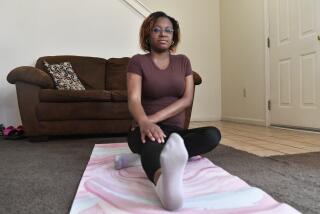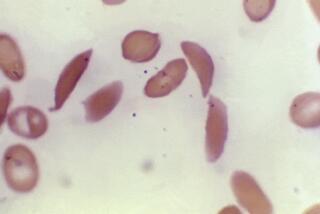2nd Infant Gets Gene Therapy for Immune System Disorder
- Share via
SAN FRANCISCO — As one Los Angeles newborn recovered from pioneering gene therapy to combat an immune system disease, another afflicted infant Monday underwent the same treatment--one that doctors hope can be used to fight other, more common genetic disorders.
Three-day-old Zachary Riggins, whose rare hereditary defect could mean an early death or dependence on costly drugs, received an injection of his own genetically altered cells at the UC San Francisco Medical Center.
The procedure, resembling a blood transfusion, lasted about five minutes.
Meanwhile, 6-day-old Andrew Gobea was doing well at Childrens Hospital Los Angeles, two days after he became the first baby to undergo gene therapy.
Both children suffer from severe combined immunodeficiency, or SCID, caused by the lack of an enzyme essential to maintaining the immune system. The rare, inherited disorder leaves the body defenseless against infectious disease.
About 100 babies are born in the United States with the disorder each year. If untreated, many die before their first birthdays. The best-known victim was David, the “boy in a bubble,” who lived in isolation in a Houston hospital for 12 years before his death in 1984.
Doctors hope that the experimental therapy will cure the babies, letting them lead normal lives. They say it also may pave the way to treat more common disorders.
“If this approach . . . is effective, then it could be applied to newborns with many other genetic diseases, such as . . . sickle cell anemia,” said Dr. Diane Wara, a UC San Francisco immunologist overseeing the treatment of Zachary. One day, doctors hope, similar gene therapy can even be used to treat AIDS.
The procedure for both infants is the same. Immediately after birth, doctors drew blood from the babies’ umbilical cords and isolated some stem cells, which produce immune system cells in the blood. The cells are genetically treated to remove their defects and then re-injected.






